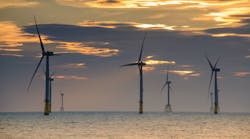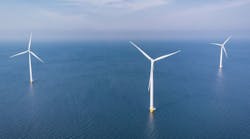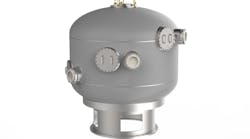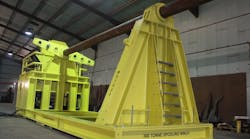Editor's note: This story first appeared in the 2023 Offshore Wind Special Report, which published within the September/October 2023 issue of Offshore magazine.
By Jon Salazar, Gazelle Wind Power
The reasons for the recent attention surrounding floating offshore wind power are obvious. Onshore and fixed-bottom sites are limited by space, and those wind farms cannot take advantage of the more powerful, less intermittent winds that blow in waters 60 m or deeper. However, several problems prevent floating offshore wind from growing exponentially and being cost-competitive with other forms of wind energy while remaining sustainable and environmentally friendly.
Wind turbines will continue growing larger to meet decarbonization goals and meet energy demands—with some reaching heights comparable to the Eiffel Tower. That means the floating platform supporting the turbine must be large and stable enough in deep seas to ensure optimal operation and output.
In 2023, global classification organization DNV surveyed 244 offshore wind experts, asking them, “Where do you see the biggest risk in the supply chain” in floating offshore wind platform technology? The leading response was lack of port infrastructure, with the second highest response being a lack of installation and vessel availability.
Offshore wind platform designs in use today that support turbines large enough to meet the targeted output capacity are expensive to build at the port and too cumbersome to build elsewhere to transport to shore. These designs require harbors to customize their infrastructure to retrofit the equipment needed to construct and assemble these large structures. The UK Floating Offshore Wind Taskforce estimated that 11 UK ports would need to be retrofitted into offshore wind hubs, requiring an investment of $5 billion. That does not include the added expense of building vessels capable of towing turbines out to sea and installing them.
Floating offshore wind developers must rethink platform technology design that will not require redesigns or retrofits for port facilities and shipyards. Platforms that utilize a hybrid of tension-leg and semisubmersible designs and a modular and scalable assembly process would eliminate the need to customize cranes or equipment to handle the platforms. Modularity and scalability would also result in a significant weight reduction, leading to lower storage costs due to the platform’s buoyancy allowing for low draft in towing and wet storage with high stability.
In addition to construction and assembly, how the platform will operate with a full-size turbine in the open sea is a critical element of rethinking design. Dynamic mooring that balances the strong forces of deep-ocean wind and waves should keep the turbine pitch low, improving efficiency in operation. Additionally, mooring lines connected to the seabed should have minimal impact or benefit fragile marine ecosystems.
All of these considerations come with the caveat that floating wind farm production should not undermine adjacent blue economy industries like fishing and shipping. Working together with these industries will only serve floating offshore wind development positively in the future.
Taking these points into account will not only reduce the costs of expensive port retrofits, but they open more ports around the world to the possibility of floating offshore wind, creating local jobs and strengthening industry supply chains to reach the scale necessary to drive the energy transition forward.
Much like cost reductions that have taken place in the solar power industry over time, increased investment and innovation breakthroughs will reduce the energy costs in floating offshore wind in the coming years. When improved, price efficiencies will open massive opportunities, with predicted installed market capacity for floating offshore wind set at nearly 300 GW by 2050, according to DNV.











